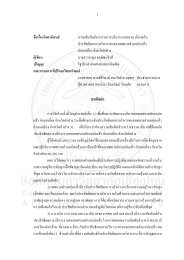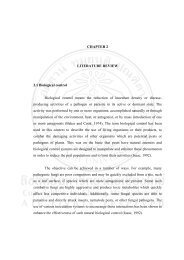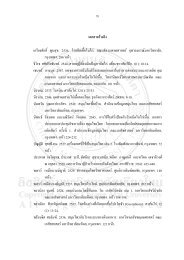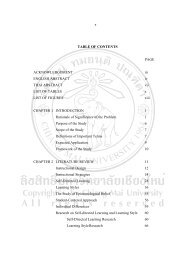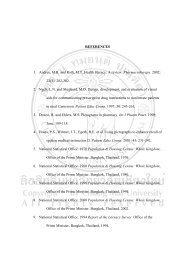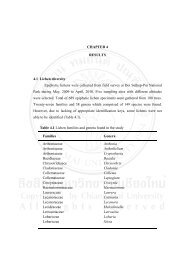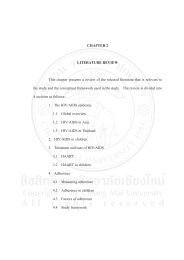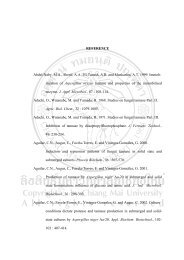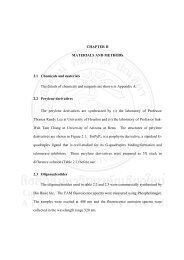Chapter Four
Chapter Four
Chapter Four
You also want an ePaper? Increase the reach of your titles
YUMPU automatically turns print PDFs into web optimized ePapers that Google loves.
18<br />
together form the most abundant biomaterial in nature and so studies of their<br />
degradation and colonization are important ecologically (Hyde et al., 1998b).<br />
Cellulose is the main constituent of wood with approximately 40-50% of the<br />
dry weight of all wood species (Rayner and Boddy, 1988). It is located predominantly<br />
in the secondary cell wall and least abundantly in the compound middle lamella<br />
(Yuen, 1998). Cellulose comprises a long and linear homopolymer of β-D-glucose<br />
residues connected by β-1,4 glycosidic linkages. The structural properties in the cell<br />
wall and many physical and chemical properties of wood were controlled by the<br />
hydroxyl group at the surface of the cellulose molecules (Zabel and Morrell, 1992).<br />
Hemicellulose is composed of heteropolysaccharides. The dry weight of<br />
hemicellulose in wood is between 20-30% (Yuen, 1998). Its polymers comprise<br />
various pentose and hexose sugar units, i.e. glucose, xylose, mannose, galactose,<br />
arabinose, rhamnose and uronic acids (Eriksson et al., 1990). In contrast with<br />
cellulose, hemicellulose has short chain lengths, side chains that are sometimes<br />
branched and sugar monomers other than glucose (Yuen, 1998).<br />
Lignin is the most complex compound in the cell wall constituents that limit<br />
microbial growth and retard wood decay. Lignin coats the cell wall polysaccharides<br />
and chemically combines with them to form lignocellulose, which is very resistant to<br />
microbial degradation, being a poly phenolic polymer formed from three types of<br />
phenyl propane units (Yuen, 1998). Next to cellulose, lignin is the most important<br />
renewable resource in the ecosystem (as wood component). Lignin is present in the<br />
middle lamella and primary wall. It forms a barrier that must be degraded before most<br />
cellulose is accessible to enzymes. Lignin-degrading enzymes are found in fungi that<br />
cause soft rot, white rot and brown rot (Rayner and Boddy, 1988).




